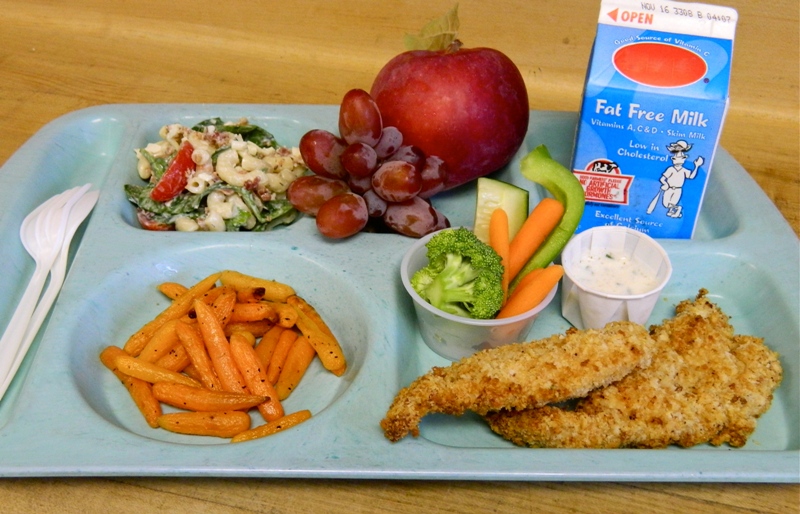School Lunches Are Getting Healthier
The amount of whole grains and fresh fruits and vegetables offered in school meals is up and sodium is down, according to a Centers for Disease Control and Prevention report released last week.
“Schools play a critical role in demonstrating and reinforcing healthy eating behaviors by making sure that nutritious and appealing foods and beverages are available and promoted to students,” Caitlin Merlo, the study’s lead author and a CDC health scientist, said in a statement.
Researchers compared data from 2000, 2006 and 2014 to determine how well U.S. schools are implementing nutrition standards issued by the U.S. Department of Agriculture in 2012. The standards require serving more fruits, vegetables and whole grains, and gradually reducing sodium over 10 years. Nutrition standards also impact foods sold during the school day.
The CDC report found that in 2014:
- Almost all schools offered whole grains each day for breakfast (97.2 percent) and lunch (94.4 percent).
- About 80 percent of schools offered two or more vegetables a day for lunch compared with 61.7 percent in 2000.
- Seventy-eight percent offered two or more servings of fruit for lunch versus 68.1 percent in 2000.
- Nearly a third — 30.5 percent — offered self-serve salad bars.
More than two-thirds of schools in 2014 brought sodium down to more reasonable levels in recipes, up from a third of schools in 2000. More than half of schools that prepared meals on-site used fresh or frozen vegetables instead of canned, and used lower-sodium canned vegetables instead of regular canned vegetables.

School lunches have more fruits, vegetables and whole grains and less sodium than in 2000. (Photo: Guiding Stars)
“We hope Congress pays close attention to these findings, because it’s clear from this new CDC study that the dedicated food service professionals in our nation’s schools are working hard every day to keep our kids healthy,” said American Heart Association CEO Nancy Brown. “If we continue to teach our kids to eat nutritious foods early on, we can protect them from a lifelong struggle with cardiovascular disease or even an early death. On this point, there is no flexibility.”
Article by Voices for Healthy Kids

This article was written by the guest author listed at the end of the article.



